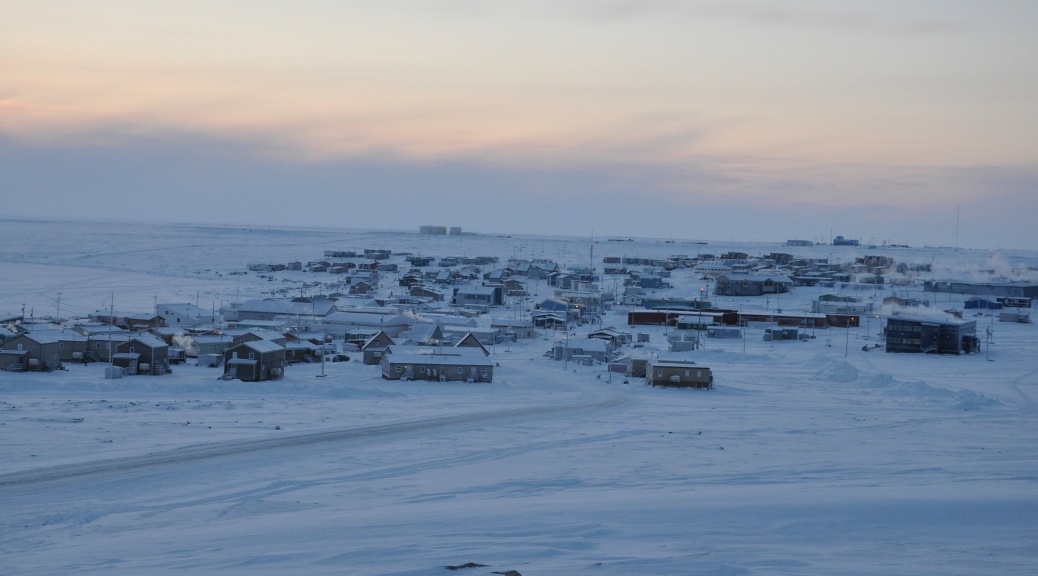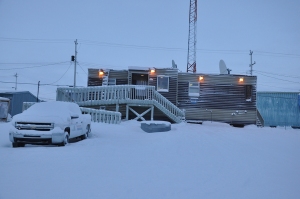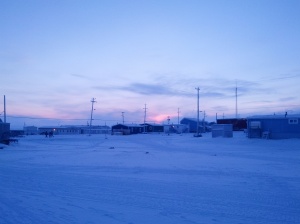Iqalungmiut will get a chance this week to see the Nunavut premiere of the documentary Sol—an Arnait Video Production feature film about the death of Igloolik artist Solomon Uyarasuk.
The premiere provides an opportunity to not only prevent an important story from fading from the headlines, but also to remember the lessons gleaned through the coroner’s inquest held to examine Uyarasuk’s death.
The mandatory inquest into the death of Uyarasuk—found lifeless, hanging from his own belt two feet above the floor in an Igloolik RCMP detachment cell in 2012—wrapped up last November.
Such inquests, automatically called when anybody dies in police custody, have two purposes: to determine the circumstances surrounding the death and to make recommendations aimed at avoiding a similar tragedy in the future.
But questions remain about the circumstances surrounding Uyarasuk’s death, and about what the RCMP and other government agencies learned, if anything.
The RCMP, the only governmental agency to publicly respond to the inquest, said in December that a “comprehensive review” is underway of the nine recommendations made by the jury of the coroner’s inquest.
The inquest’s jury recommended the investigation into Uyarasuk’s death be reopened to “fill in the missing information”.
Jury’s recommendations are not legally binding, though—it’s possible that the investigation will not be reopened, and that the jury’s eight other recommendations will, essentially, be ignored.
Whether or not the jury’s recommendations fall on deaf ears will determine whether the inquest was a meaningful participation of citizens in our justice system—or if it was merely an exercise in the appearance of justice.
Sol will premiere at the Astro Theater in Iqaluit on Jan. 28 at 6:30 p.m.. Organizers plan a moderated discussion after the screening.
The nine recommendations made by the inquest’s jury are:
1) Never leave a prisoner unattended – after failing to remove Uyarasuk’s belt in the prison cell, Sgt. Greg Murphy and Cnst. Martin Noel left their prisoner unattended in the cell for about 10 minutes.
2) RCMP should take immediate steps to install video surveillance cameras in all RCMP vehicles, detachments, cells and on-duty officers, maintaining a database – Uyarasuk sustained head injuries and other markings on his body. Police said Uyarasuk inflicted these wounds on himself as he thrashed in the back of the RCMP truck on route to the detachment, after being arrested. Video surveillance cameras would’ve convinced the jury beyond a doubt that this was the case.
3) GN staff adhere to policy of seeing injured patients in custody of the RCMP only in designated health cetres or hospitals in Nunavut – the Igloolik nurse contravened GN policy when he went to the Igloolik detachment, without supervisor consent, to treat Uyarasuk at the request of Sgt. Murphy.
4) All RCMP staff in Nunavut should receive training in IQ principles – neither Murphy nor Noel received any Nunavut-specific training prior to their stint in Igloolik and neither had ever heard of IQ principles. In fact the only advice Murphy got, after being off general duty for over a decade, was to watch out for locals who could become “hostile and combative” without provocation.
5) RCMP staff in Nunavut be issued with a service knife as part of their uniforms – After Uyarasuk was found hanging from the meal-slot of the prison door, panic and chaos ensued as a knife was frantically searched for in the detachment to cut the belt around Uyarasuk’s neck.
6) RCMP officers be provided with detachment orientation – testimony from the two officers on duty the night Uyarasuk died show they lacked knowledge of basic detachment information such as the location of keys and first aid kits.
7) that RCMP detachments be inspected regularly for deficiencies and fixed in a timely manner – the meal slot on the prison door from which Uyarasuk hung himself was a known suicide risk and had been broken for more than a year prior to Uyarasuk’s arrest
8) That RCMp acquire hook knives in all cell block areas
9) Reopen the investigation to fill in the missing information.




